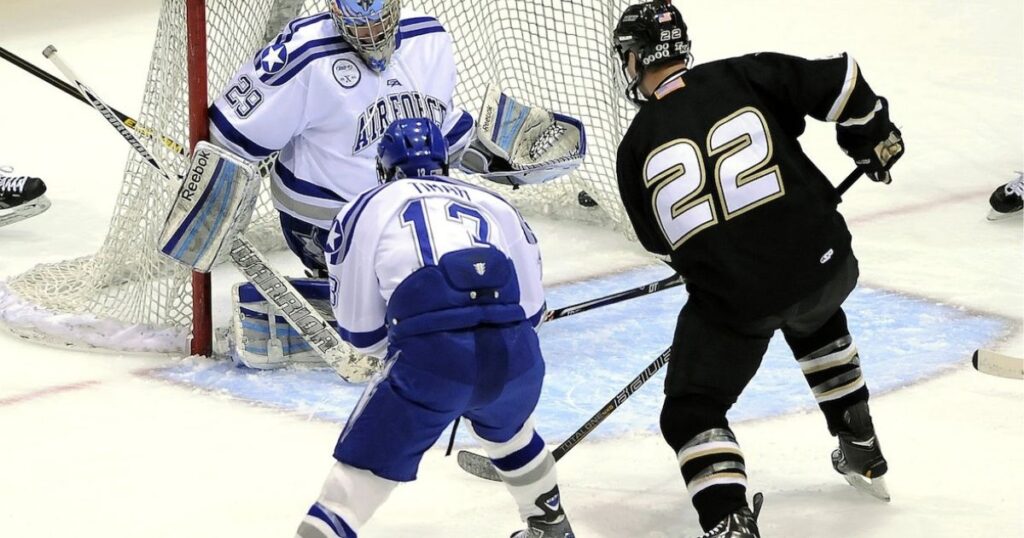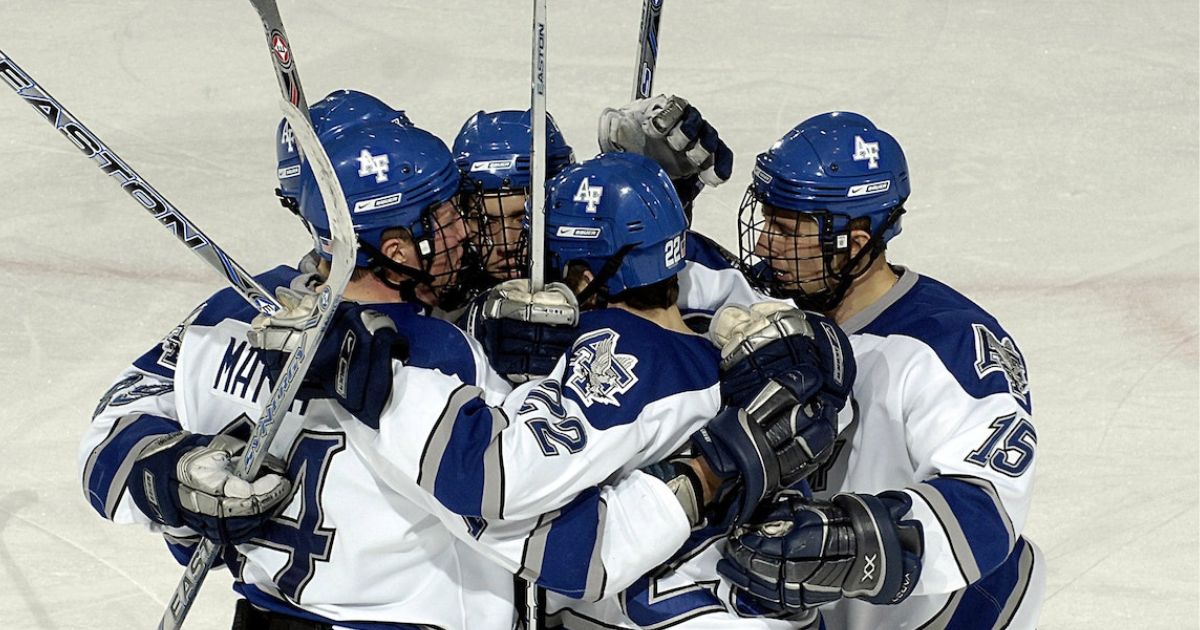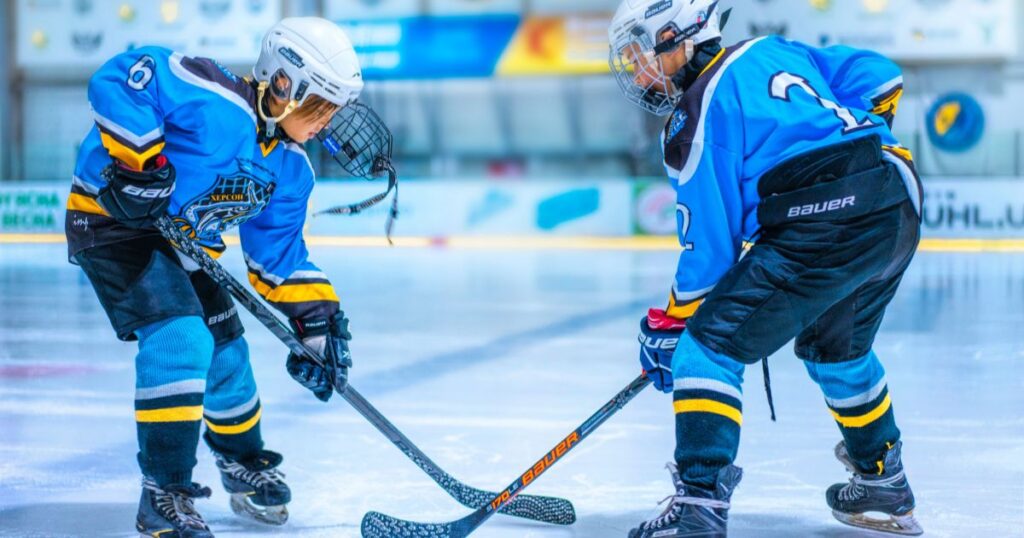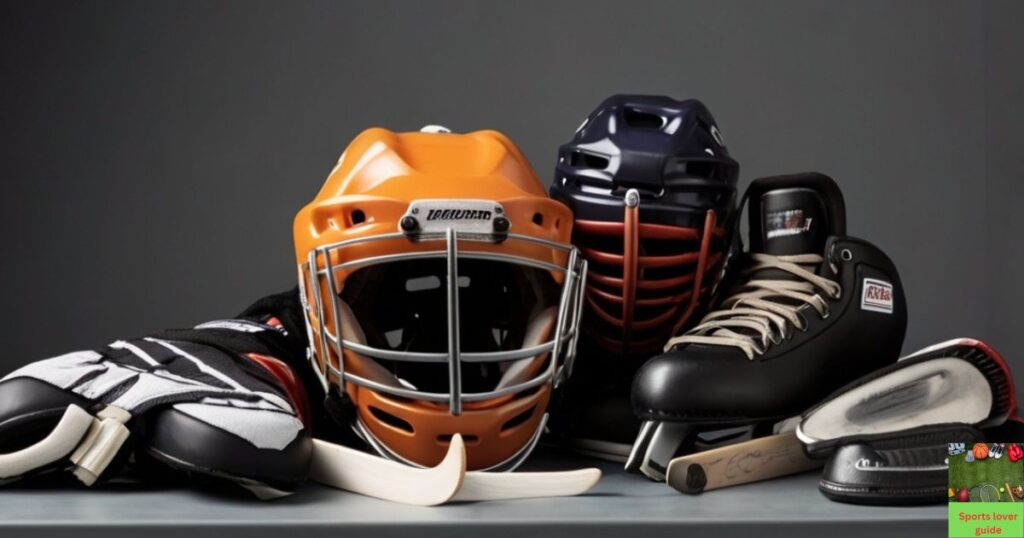Ice Hockey
Born on Canadian ice in the early 19th century, ice hockey elements its roots back to European games. In 1879, McGill University students Robertson and Smith etched the sport’s first official rules, covering the way for the formation of the iconic McGill University Hockey Club a year later. The reputable Stanley Cup, first awarded in 1892 to the Montreal Amateur Athletic Association, continues to be the ultimate prize for professional players today.
Exciting and action-packed, ice hockey charm audiences worldwide. The basic objective is simple: score more goals than your opponent by moving a rubber puck into their net. Six players per team, including a skilled goalkeeper, utilize turn sticks to move the puck with accuracy.
A typical game unfolds across three 20-minute periods, with a brief intermission separating the second and third. If the score remains tied, the excitement continues in overtime until a single goal decides the victory.
While famous for its physicality, controlled contact, and body checking are carefully regulated to ensure player safety. Helmets, elbow pads, and shin guards are essential equipment for these ice gladiators.
Boasting a rich history and passionate global fanbase, ice hockey grow both amateur and professional levels. The National Hockey League (NHL) rule supreme as North America’s premier professional league, showcasing the sport’s best talent and incredible athleticism.
What is an ice hockey game?
Ice hockey isn’t just a sport; it’s a dance on blades, a soften of speed and skill played out on a iced stage. Two teams of six, each a soften of colorful jerseys and flashing sticks, chasing a solidify puck across the ice. The air sizzled with anticipation, as each pass, each check, could be the spark that catch a goal, explode a roar from the packed arena.
This power, this drama, fuels ice hockey’s global appeal. It’s more than just a game; it’s a spectacle, a test of tolerance and strategy. Players become superheroes, defying gravity with acrobatic saves and bone-crushing checks, all while the clock ticks down and the pressure mounts. Every face-off is a tense standoff, every breakaway a heart-stopping race.
And then there’s the Olympics. The peak of hockey competition, where national pride hangs heavy in the air and every game is a clash of titans. The speed of the crowd reaches a fever pitch, flags wave wildly, and the athletes compete with the weight of their nation on their shoulders.
So, the next time you see a pair of skates carving across the ice, remember: it’s not just a game, it’s a story unfolding. A story of speed, skill, and determination, played out against the backdrop of cheering fans and Olympic dreams.
Playing Environment and Rink Design in Ice Hockey
Ice Hockey – Playing Environment
Ice Hockey is famous as the fastest game in the world, requiring skillful skating on the ice-coated rink. Teams engage in healthy competition, aiming to score more goals to win the game. Players strategize together to overcome obstacles posed by the opposing team.
Ice Hockey – Rink Design
Ice hockey is all about skating fast on ice and using your skills to outplay the other team. Think of it like a fast-paced game of label, but everyone has sticks and you’re trying to shoot a puck into a net.
Ice hockey rink dimensions:
- A big rectangle made of ice, like a giant frozen pool. It’s about the size of a basketball court, but longer.
- The ice is kept cold by pipes below, just like your fridge!
- The rink is divided into three zones:
- Middle zone: Everyone can skate here freely.
- Attacking zones: This is where you try to score goals!
- Defending zones: This is where you try to stop the other team from scoring!
- There are lines on the ice to show where the zones are, like giant painted stripes.
Goals and Goalies:
- At each end of the rink, there’s a big net called a goal cage. That’s where you shoot the puck to score!
- Each team has a goalie who guards their net. They’re like super-padded superheroes trying to stop the puck with their bodies!
Playing the Game:
- Two teams of six players each skate around, passing the puck and trying to score goals.
- It’s a fast-paced game with lots of action, like checking each other (not too hard!) and making tricky moves.
- The team with the most goals at the end wins!
Timing of Ice Hockey
Periods:
An ice hockey game is like a movie with three acts, each lasting 20 minutes. Think of it like this:
- Each act is called a “period.” There are three periods in total, making the game about an hour long.
- The clock only counts down when the puck is moving, like how a movie pauses during scenes without action.
- If the game gets interrupted (like a penalty or someone needs a break), the clock stops too. So, the actual game time might be a bit longer than an hour.
End Changes:
When the second and third periods end, teams switch sides of the rink, just like flipping sides in the tag. This keeps things fair because:
- Different sides might have slightly different ice conditions, making it harder or easier to skate or shoot.
- Being closer to your bench means faster player changes, which can give you an advantage.
Face-Off:
- The game starts with a face-off at the center of the rink, with the center players facing each other.
- The referee drops the puck onto the ice between the central players, who then compete to gain possession and initiate gameplay.
- Face-offs are also used to resume play after any stoppage during the game.
Overtime and Shootout:
- In the event of a tie game at the end of regulation time, a 5-minute overtime period is given for continued play.
- If a team scores a goal in overtime secures a win and earns a point for the team.
- If the game remains tied after overtime, a shootout is conducted with 3 shooters from each team.
- The team with the most goals in the shootout is declared the winner of the game.
Check out our related article
Ice Hockey Tournament Extravaganza: Ranking the Best of Global Competitions
Ice Hockey Equipment
Ice Hockey Equipment
The basic equipment required to play Ice Hockey includes:
1. Puck:
- Made of black harden rubber
- Diameter: 80-85mm
- Thickness: 25-30mm
- Weight: 1-1.5kg
- Protective covering: 2mm thickness
2. Hockey Stick:
- Made of wood or graphite
- Length: 150-200cm
- Blade angle: 135 degrees
- Blade length: 25-40cm
- Goalie stick: Wider blade, the smaller angle
Protective Equipment:
3. Helmet:
- Mandatory for all players
- Optional face cage for added protection
4. Mouth Guard:
- Custom-made plastic guard to protect teeth and jaw
5. Neck Guard:
- Outer nylon plates with inner padding to protect the neck and throat
6. Shoulder & Arm Pads:
- Hard plastic outer with shock-absorbing foam
- Protects shoulders, chest, spine, and ribs
7. Elbow Pads:
- Guards elbow joints, upper and lower arms, and forearms
8. Gloves:
- Leather gloves with thick padding for hand protection
9. Hockey Pants:
- Nylon knee-length pants with safety belts
- Hold hip, tailbone, thigh, and pelvic pads
10. Shin Pads:
- Knee and calf protectors with a strong plastic outer shell
11. Hockey Socks:
- Knitted wool socks without foot portion to cover shin pads
12. Ice hockey Skates:
- Firm outer shell boots with memory foam inner sole
- Rounded heels and attachable skate blades
13. Jersey:
- Loose colored shirt made of nylon with colored side panels
- The player’s name and number displayed
Goalkeeper Equipment
14. Chest and Arm Protector:
- A thick foam-padded guard extended to the abdomen
15. Blocker:
- Rectangular padded glove used to hold the hockey stick
16. Catch Glove or Trapper:
- A thicker glove used to block and catch the puck
Watch the video
Ice Hockey Terms
Here are some terms commonly used in ice hockey:
The Ice Arena:
- Rink: The big, smooth ice surface where the game happens.
- Blue Lines: Two lines that divide the ice roughly into thirds. One team attacks in the zone closest to their goal, and the other defends.
- Red Line: The line in the middle, like a center line in other sports.
- Goal Line: The red line in front of the net where the puck needs to go to score.
- Goal Cage: The net is guarded by the goalie where the puck needs to go.
- Neutral Zone: The open space between the blue lines, no one’s really attacking or defending here.
The Players:
- Face-off: How the game starts or restarts after a pause. Two players line up and try to tap the puck to their teammates first.
- Center: The player in the middle of the forwards, like the quarterback in football.
- Wingers: The players on the left and right of the center, like wide receivers in football.
- Defensemen: Players who try to stop the other team from scoring, like defenders in soccer.
- Goalie: The player who guards the net and tries to stop the puck from going in.
- Extra Attacker: Sometimes a team takes out their goalie and adds another attacker for a chance to score a late goal.
Scoring & Penalties:
- Goal: When the puck goes into the net!
- Assist: When a player helps another player score (max 2 assists per goal).
- Save: When the goalie or any player stops the other team from scoring.
- Penalty Shot: Like a free throw in basketball, awarded when a player breaks a big rule to stop a goal.
- Buzzer Beater: A goal scored just before the end of a period.
- Hat Trick: Scoring 3 goals in a row!
Extra Stuff:
- Short-handed: When a team has fewer players because someone got a penalty.
- Power Play: When a team has more players because the other team got a penalty.
- Breakaway: When an attacker has a clear shot at the goal with no defenders around.
- Backchecking: Skating back to defend after your team loses the puck.
- Backhand Shot: Shooting the puck with the back of your stick blade.
- Drop Pass: Dropping the puck on the ice for a teammate to pick up.
How to Play Ice Hockey
Face-off: The Game Begins
- The game starts with an opening face-off.
- The referee meets both teams’ center players at the center of the ice.
- The referee drops the puck between the two opposing center players.
- The center players battle to gain possession of the puck.
Players and Positioning
A typical ice hockey team consists of 20 players: 12 forwards (centers and wingers), 6 defensemen, and 2 goaltenders.
Substitutions can be taken anytime during play
The players are positioned on the ice rink as follows
- The Generals: In the middle, you have the Centers, like quarterbacks in football. They lead the attack and try to grab the puck during face-offs.
- The Wings: On the left and right of the Centers are the Wingers, like wide receivers. They help the Centers get the puck and score goals.
- The Shields: Behind them stand the Defensemen, like soldiers protecting their castle. They stop the other team from scoring and clear the puck away from their goal.
- The Guardian: Finally, guarding the goal like a brave knight is the Goalkeeper. They’re the last line of defense and use everything they’ve got to block the puck!
Gameplay Overview
- Teamwork! Each side has 6 players like in mini-soccer – all working together.
- Goal Rush! One team attacks, trying to pass the puck and shoot it into the net for points (goals!).
- Defense Up! The other team plays defense, blocking shots and stealing the puck to stop them from scoring.
- Flexible Players: Players switch roles depending on who has the puck. Attackers become defenders and vice versa!
- Three Rounds: Like boxing, the game has 3 rounds of 20 minutes each. After the second and third rounds, teams switch sides of the ice for fairness.
Face-off and Play
- Two center players face off in the center like brave warriors, each trying to win the puck for their team.
- The wingers, like loyal knights at their sides, are ready to jump in and help their center grab the puck.
- The defensemen, positioned further back, keep their eyes uncovered. If the puck escapes the center battle, they’re ready to jump in and take control!
Key Guidelines and Stoppages
Offside: The red line as a magic barrier. An attacker can’t be over the magic barrier before the puck gets there. If they do, it’s like a false start, and the other team gets the puck.
Icing: Think of the red line as a halfway line. If the defending team shoots the puck past the red line and across the other team’s goal line without anyone touching it, it’s like a do-over for the other team. They get a chance to start the play again near their own goal.
Out of Play: If the puck goes flying and lands anywhere outside the ice rink, or even bounces high up into the netting, the game pauses. It’s like taking a time-out until someone puts the puck back in play.
Stickhandling and Moving the Puck
Players move the puck with their hockey sticks, requiring skill and coordination.
Grip it right:
- Top hand: Hold the stick like a handshake, firm and strong to guide the Puck.
- Bottom hand: Relax, like you’re holding a feather, for gentle push and quick action.
Blade magic:
- Heel: Like the brakes on a bike, use the heel of the stick to stop the Puck or change its direction.
- Toe: Think of it like the gas pedal! Push the Puck with the toe for speed and sharper turns.
Heads up, player!
- Keep your eyes open like a detective, scanning the ice to see your teammates, opponents, and where the Puck is going.
Protect your prize:
- The Puck is like your treasure! Use your body to shield it from opponents and your stick to keep it close.
Ice hockey is a physical sport that requires teamwork, skillful puck handling, and strategic gameplay.
Scoring in Ice Hockey
Objective: Scoring Goals for Points
- The primary aim of skaters in ice hockey is to score goals
- The team that has the highest number of goals is declared the winner.
- Points are primarily awarded for goals, but players can also earn points for assists.
Assists: Supporting Goal Scorers
- An assist is credited to two players on the goal-scoring team.
- The first player is the one who touches, passes, hits, or deflects the puck, directly contributing to the goal.
- The second player is the one whose play supports the forward in making the goal.
- Defensemen who gain an assist receive one additional point added to the team’s total.
Goal Scoring:
- A goal is scored when the puck crosses the goal line and enters the net bypassing the goaltender.
- One point is awarded to the team that successfully scores a goal.
Circumstances Where Goals Are Not Awarded:
Goals are not awarded under certain circumstances:
- If a player tries to kick or throw the puck into the goal cage without using their hockey stick.
- If the scoring team has more than six players on the ice at the time of the goal.
- If the goalkeeper shoots the puck into the opponent’s goal cage, crossing the center red line.
- If the goal cage has been remove from its position at the time of the goal.
- If the opposing team players hamper the goalkeeper from blocking the goal.
Scoring goals is the primary means of accumulating points in ice hockey. Teams attempt to outscore their opponents by executing skillful plays, utilizing teamwork, and capitalizing on scoring opportunities.
Types of Goals in Ice Hockey
There are different types of goals in ice hockey. Here are some:
Regular Goal: This is the most common type, scored when both teams have the same number of players (6 each) on the ice. Just a regular battle for the net!
Underdog Goal (Short-Handed): This is like scoring with one hand tied behind your back! It happens when a team with fewer players (because someone got a penalty) manages to shoot the puck in the other team’s net.
Advantage Goal (Power Play): Having an extra teammate. That’s what happens when the other team gets a penalty, giving your team more players on the ice. And guess what? It’s easier to score with more people!
Oops Goal (Own Goal): Sometimes, players accidentally knock the puck into their net. It’s like putting the ball in the wrong basket in basketball. Not ideal, but it happens!
Empty Net Goal: When a team is desperate to score a late goal, they take out their goalie and add another attacker. This leaves the net empty, and if they manage to shoot the puck in, it’s a goal! But it’s risky, as the other team can easily score on the empty net too.
Penalty Shot Goal: If a player breaks a major rule to stop the other team from scoring, the other team gets a special chance to score. It’s like a free throw in basketball, but instead of shooting from a line, they get a one-on-one battle with the goalie!
These different types of goals add excitement and variety to the game of ice hockey.
Ice Hockey Penalties
Penalties in ice hockey are crucial for enforcing rules and regulating player conduct. They can be minor or major, resulting in time penalties and affecting team dynamics.
Minor Penalties: These infractions lead to a two-minute penalty and leave the penalized team short-handed.
- Kneeing
- Hooking
- Elbowing
- Interference without possession
- Slashing or holding
- Spearing
- Excessive players on the ice
- High sticking
- Roughing
- Cross-checking
Major Penalties: These offenses result in a five-minute penalty without substitution.
Major penalties often stem from escalated minor penalties, involving fights or intentional head and face targeting.
Penalties serve an essential role in maintaining fair play and upholding the integrity of ice hockey games.
 Conclusion
Conclusion
Ice hockey isn’t just a sport, it’s a global phenomenon with passionate fans cheering for their teams across Europe and Asia. Whether you’re lacing up your skates, watching from the stands, or even running a hockey business, there’s something in this sport for everyone.
Here’s what makes ice hockey so special:
Variety and excitement: Each team brings its unique style to the ice, making every game fresh and thrilling. Witness the speed and skill of European players or the courage and determination of Asian teams.
Beyond entertainment: It’s not just about the score! Understanding the rules, strategies, and even the business side of hockey deepens your connection to the sport and lets you appreciate it on a whole new level.
Building character: It takes real toughness, both physical and mental, to shine in hockey. Teamwork, strategic thinking, and pure hard work are essential, making it a rewarding journey for any player.
Open to all: The challenges might seem difficult, but with dedication and practice, anyone can improve their skills and experience the joy of playing hockey.
A world of opportunities: Ice hockey is more than just a game; it’s a community that recognizes dedication and effort. Whether you’re a player, fan, or business owner, there’s a place for you in this exciting world!
Frequently asked questions about ice hockey
1) What is ice hockey?
Ans Ice hockey is a team game played on ice, in which two teams of six players including five skaters and one goalkeeper) try to score goals by shooting a puck into the opposing team’s net. The team with the most goals at the end decides the winner.
2)What are equipment for ice hockey?
Ans Players need skates, a helmet with a cage or shield, shoulder pads, elbow pads, gloves, shin guards, and a stick. Goaltenders also wear a chest protector, pants, and leg pads.
3)How long is an ice hockey game?
Ans A regulation ice hockey game is 60 minutes long, divided into three 20-minute periods.
4) How is ice hockey scored?
Ans A goal is scored when the puck crosses the opposing team’s goal line between the goalposts and under the crossbar. A goal is worth one point.
5 What are the penalties in ice hockey?
Ans Penalties are given for various infractions, such as tripping, slashing, or high-sticking. A player who commits a penalty must leave the ice for a designated amount of time, and their team must play with one fewer player until the penalty expires.
6)What is offside in ice hockey?
Ans Offside occurs when a player crosses the opposing team’s blue line before the puck.
7) What is icing in ice hockey?
Ans Icing occurs when a player shoots the puck from behind their blue line and it crosses the opposing team’s goal line without being touched. If icing is called, play is stopped and a faceoff is held in the offending team’s defensive zone.
8)What are power plays and penalty kills?
Ans A power play occurs when one team has more players on the ice due to a penalty by the other team. A penalty kill occurs when a team is playing with fewer players due to a penalty.
9)How is overtime played in ice hockey?
Ans In the NHL, overtime is played with three skaters on each team for five minutes of sudden-death play. If no results come in in overtime, the game is decided by a shootout.
10) Who are some famous ice hockey players?
Ans Some of the greatest players in ice hockey include Wayne Gretzky, Mario Lemieux, and Sidney Crosby. These are a few examples there are many famous players in ice hockey history



2 thoughts on “Ice Hockey: The Thrilling Game of Speed, Skill, and Strategy”